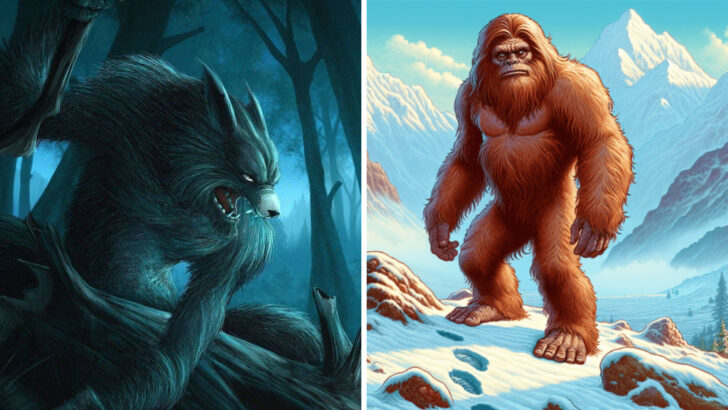Dragons weren’t born in fire—they were inspired by fossils.
Griffins, mermaids, unicorns—these legendary beasts didn’t just spring from wild imaginations. Many trace their roots to real animals, twisted by fear, awe, and a touch of storytelling magic. Nature offered the clues—humans ran with the fantasy.
What looked like a giant serpent might’ve just been a Nile crocodile. That winged terror from ancient scrolls? Possibly a misunderstood bird of prey. Across centuries and continents, our ancestors turned everyday creatures into symbols of power, danger, and mystery.
Ready to meet the real faces behind the fables?
Let’s crack open the myths and find out which creatures walked—or swam or soared—so legends could be born.
Unicorn
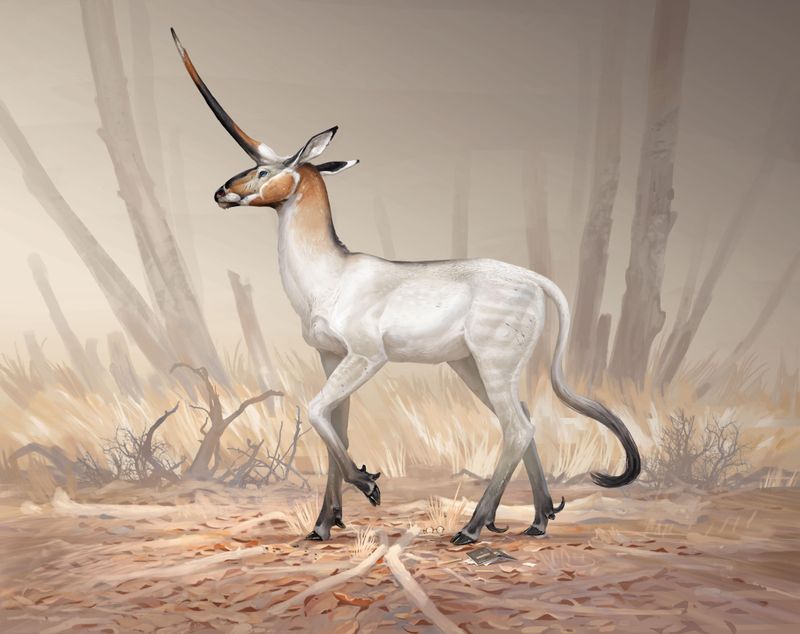
The unicorn, a symbol of purity and grace, finds its roots in the elegant oryx. Ancient travelers, captivated by the oryx’s long, straight horns, spun tales of a majestic one-horned creature. The oryx’s horns, when seen in profile, can easily be mistaken for a single horn, fueling the unicorn myth. Throughout history, unicorns have been depicted as elusive and ethereal beings. Their enchanting presence in tales has captivated audiences worldwide.
Interestingly, medieval bestiaries often included unicorns, portraying them as creatures that could only be tamed by a maiden’s touch. This added an element of mysticism to their lore.
Dragon

Dragons, known for their formidable presence, are deeply rooted in the fearsome Komodo dragon. These real-life giants, with their imposing size and predatory nature, sparked imaginations. In various cultures, dragons are depicted as wise and powerful. They guard treasures, symbolize strength, and sometimes embody natural disasters.
In Chinese culture, they are revered as benevolent creatures associated with water and prosperity. Conversely, Western folklore often casts them as fearsome adversaries to be slain by valiant knights. The duality of dragons mirrors humanity’s complex relationship with nature’s untamed forces.
Mermaid
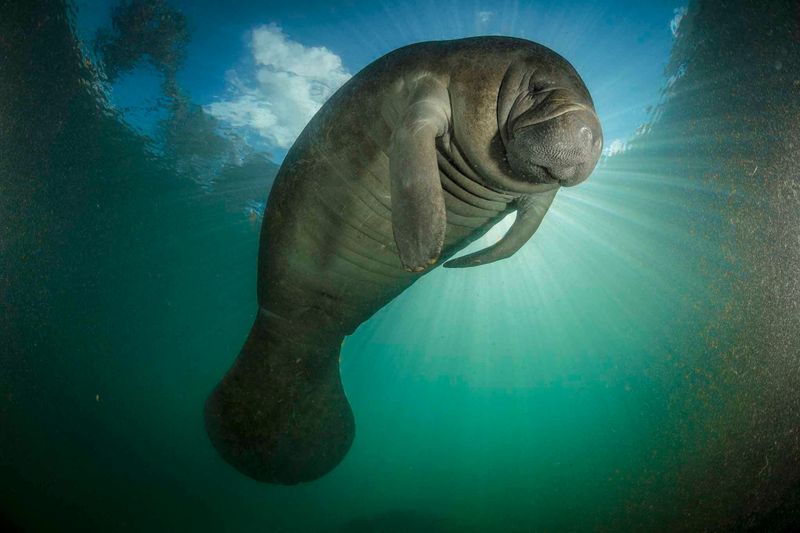
Mermaids, with their beguiling allure, likely trace back to manatees or dugongs. Sailors, weary from months at sea, would mistake these sea cows for enchanting half-human beings. The mermaid myth permeates folklore, embodying the mystery of the ocean. Often depicted with a mesmerizing voice, they lure sailors to their doom.
These tales reflect the allure and danger of the open sea. In some cultures, mermaids are seen as protectors of the sea, embodying both beauty and peril. The duality of mermaids serves as a metaphor for the unpredictable nature of the ocean.
Griffin
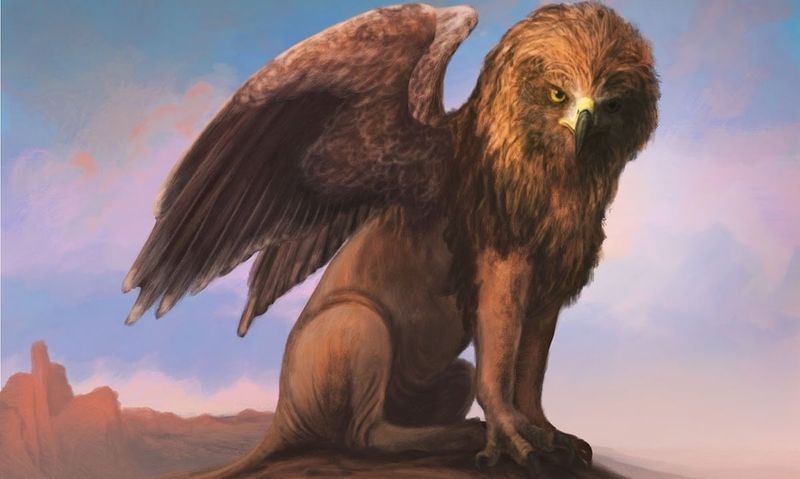
The griffin, a symbol of divine power, combines the lion’s might with the eagle’s majesty. This mythical creature may have originated from the fossils of Protoceratops, which resembled a lion-eagle hybrid. Griffins appear in ancient art and mythology, representing guardians of treasures and powerful protectors.
In medieval lore, they are often depicted as noble yet fierce. Their image has been used in heraldry, symbolizing courage and leadership. The blend of terrestrial and aerial traits in griffins reflects the dual nature of strength and wisdom.
Phoenix
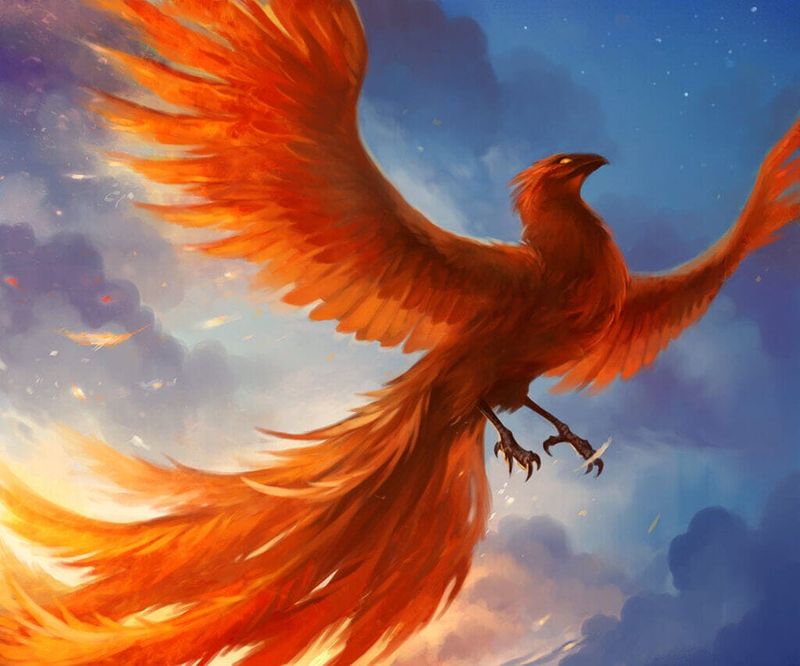
The phoenix, a symbol of rebirth and immortality, may find its origins in the Bennu bird of ancient Egypt. This mythical creature is often associated with the sun, dying in flames only to rise anew from its ashes. Throughout cultures, the phoenix embodies hope and renewal.
In Greek and Roman mythology, it is revered as a powerful symbol of the cyclical nature of life. The phoenix’s fiery transformation captivates the imagination, illustrating the beauty of starting anew. Its enduring legacy continues to inspire those seeking resilience and renewal.
Kraken
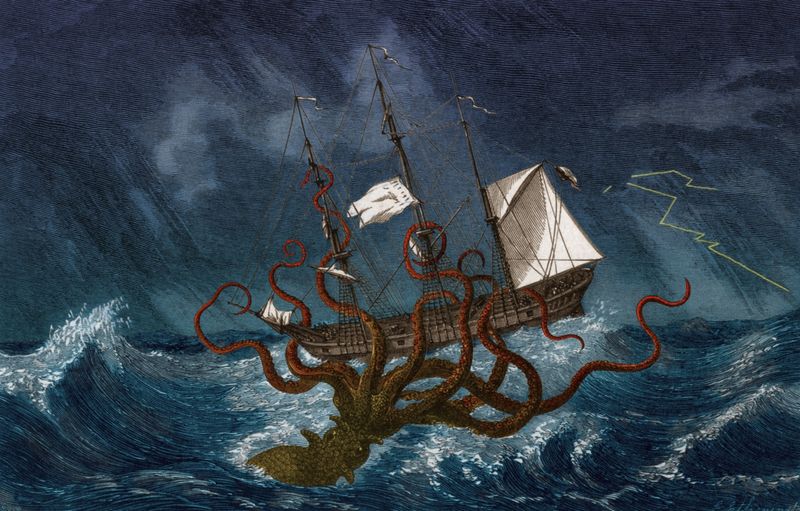
The kraken, a legendary sea monster, draws inspiration from the colossal squid. Sailors’ accounts of sightings fueled tales of a creature capable of dragging ships beneath the waves. In Scandinavian folklore, the kraken embodies the mysterious and terrifying aspects of the sea.
These stories often depict the kraken as both a harbinger of doom and a formidable force of nature. The creature’s massive size and strength mirror the ocean’s unpredictable power. The kraken serves as a reminder of humanity’s vulnerability to the vast and uncharted waters.
Sphinx

The sphinx, renowned for its enigmatic presence, blends human intelligence with leonine strength. This creature is closely associated with the Giza Sphinx, an iconic monument in Egypt. In mythology, sphinxes pose riddles, guarding secrets and treasures.
Their dual nature symbolizes both wisdom and power. In Greek mythology, the sphinx challenges travelers with riddles, devouring those who fail to answer. The symbolic representation of the sphinx highlights humanity’s quest for knowledge and the perils of ignorance. Its enduring legacy continues to captivate the world.
Chimera
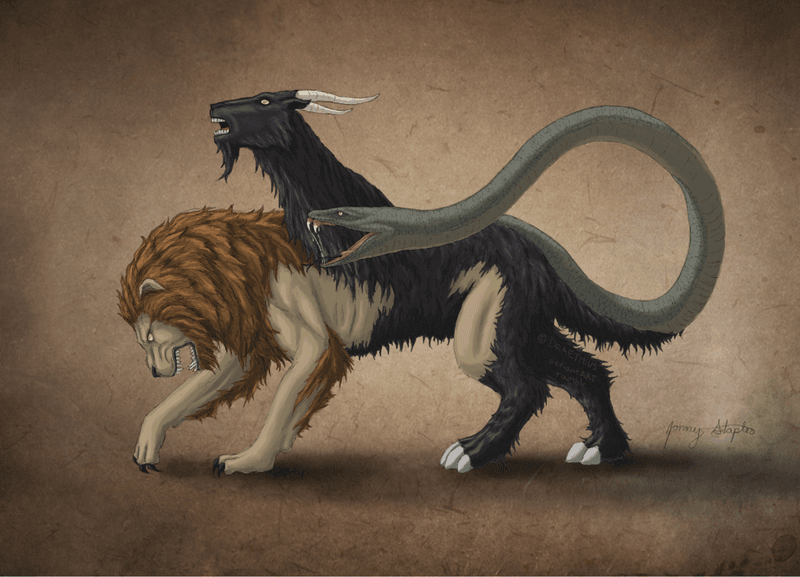
The chimera, a fearsome composite creature, may be inspired by the fascinating echidna. In Greek mythology, chimerae possess the traits of multiple animals. They are depicted as monstrous and formidable, blending the characteristics of a lion, goat, and serpent.
Their ferocious nature in myths embodies chaos and unpredictability. Ancient artists depicted chimeras to symbolize complex challenges and fears. The varied elements of a chimera reflect humanity’s struggle to understand the unknown, merging familiar traits to create something entirely new.
Basilisk

The basilisk, known for its deadly gaze, may have been inspired by the cobra’s hypnotic stare. In mythology, basilisks are feared as kings of serpents, capable of killing with a glance. These legendary creatures embody the danger and allure of the unknown.
In various tales, basilisks symbolize the thin line between life and death. Their fearsome reputation serves as a warning of nature’s perilous beauty. The basilisk’s mythical allure continues to captivate, reflecting the eternal struggle between fear and fascination with the natural world.
Hippogriff
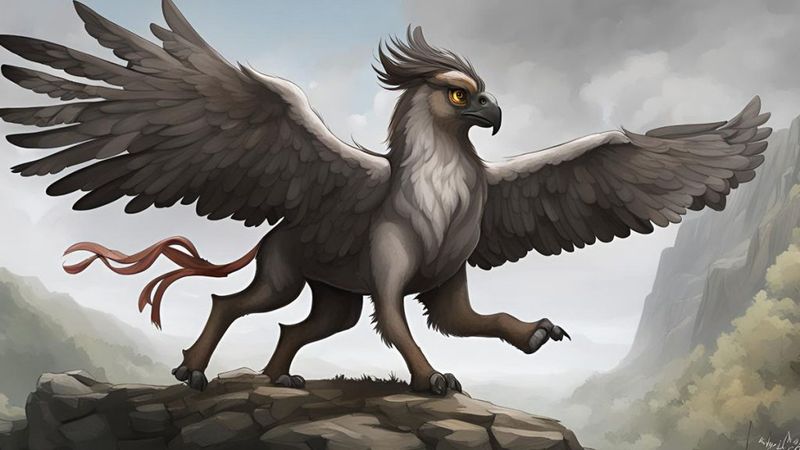
The hippogriff, born from poetic imagination, blends the elegance of a horse with the majesty of an eagle. This creature, popularized by Renaissance literature, symbolizes the union of earthly and celestial realms. Hippogriffs are depicted as noble and loyal, often serving as steadfast companions to heroes.
Their origin in art and poetry reflects humanity’s desire to transcend reality. The hippogriff’s dual nature embodies the harmonious balance between strength and grace. They inspire a sense of wonder, encouraging exploration beyond the ordinary confines of life.
Minotaur
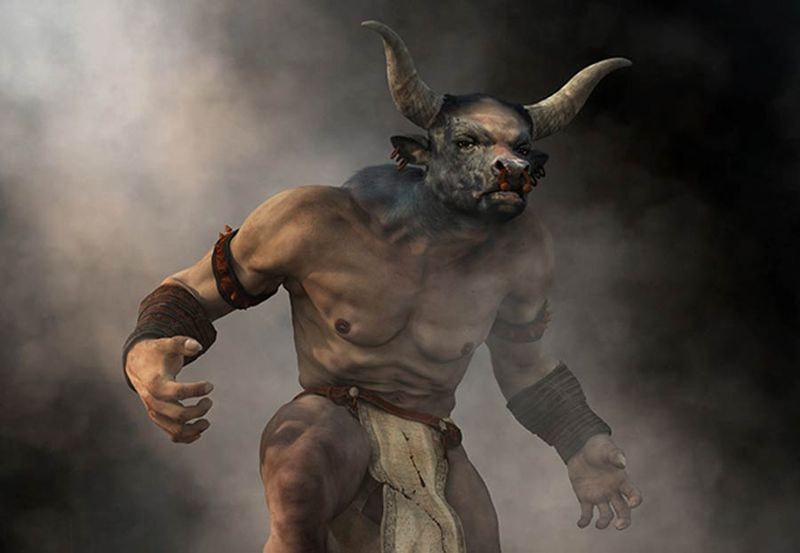
The minotaur, a creature of Greek legend, combines human and bull features. This mythical being is rooted in the ancient practice of bull-leaping in Minoan Crete. The minotaur’s story, set in a labyrinth, represents the complexities of human nature and the struggle between civilization and savagery.
It also reflects themes of isolation and identity. The labyrinth symbolizes the intricate paths of human choices and destiny. The minotaur’s legacy endures as a symbol of inner conflict and the perpetual search for meaning in life.
Werewolf
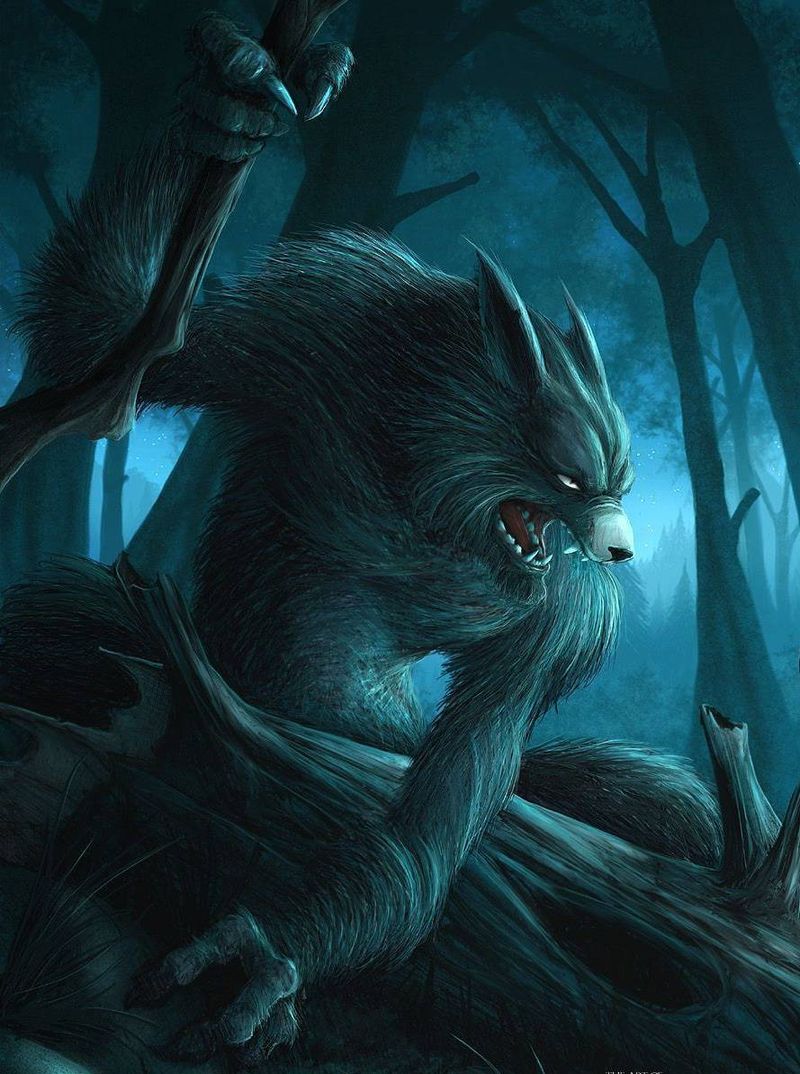
Werewolves, creatures of night and legend, may have originated from the misunderstood behavior of wolves. Tales of transformation and lunar cycles fueled the myth of humans turning into wolves under a full moon. Werewolves embody the primal fears of losing control and the animalistic side of human nature.
In folklore, they symbolize the duality of humanity, caught between civilization and wild instincts. The werewolf myth continues to intrigue, representing the struggle with inner demons and the allure of the forbidden. Their legacy endures in stories of transformation and redemption.
Pegasus
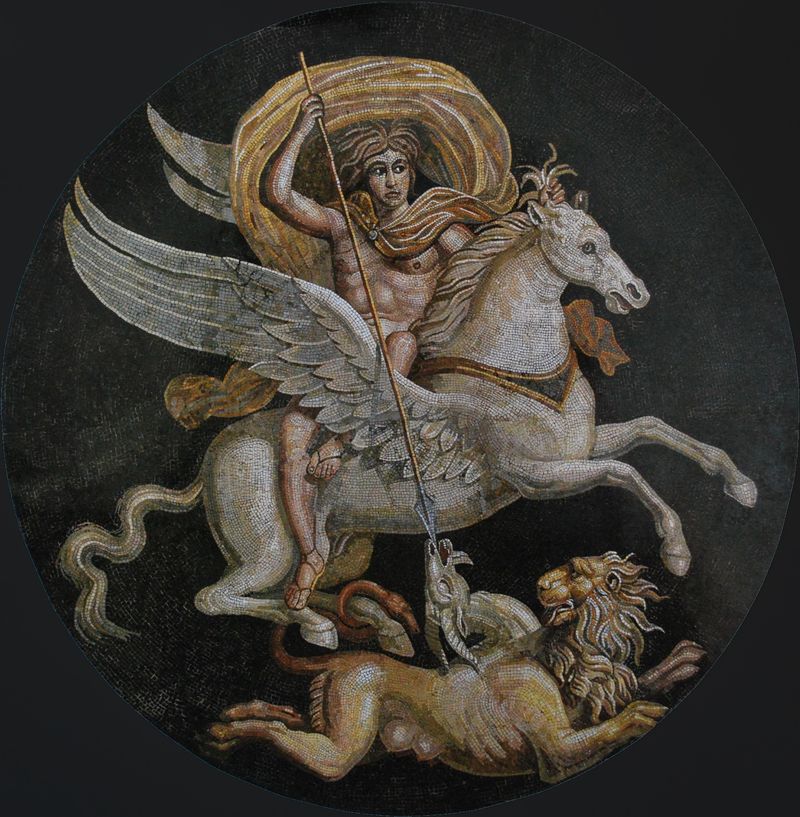
The pegasus, a symbol of inspiration and freedom, finds roots in tales of winged horses. In Greek mythology, Pegasus springs from Medusa’s blood, soaring into the heavens. This creature represents the transcendence of earthly bounds, embodying the pursuit of dreams and creative expression.
Pegasus’ image graces art and literature, inspiring countless stories of heroism and adventure. The winged horse symbolizes the power of imagination and the limitless possibilities of the human spirit. Its enduring legacy continues to captivate dreamers and creators alike.
Yeti
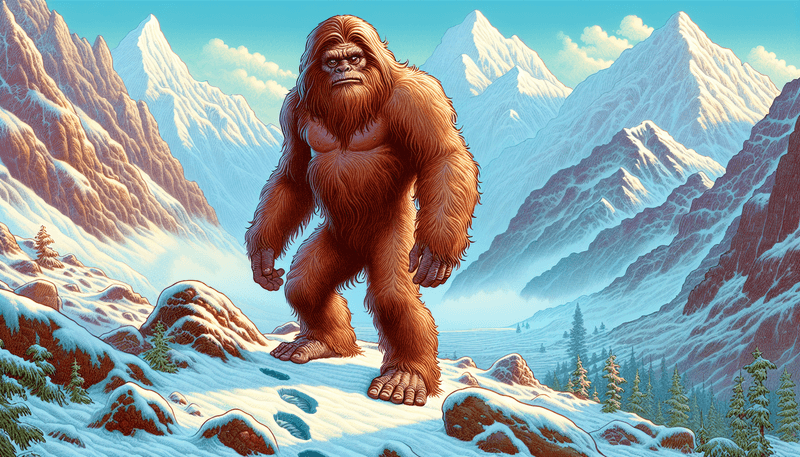
The yeti, a creature of mystery and intrigue, is linked to sightings of Himalayan bears. Known as the “Abominable Snowman,” tales of the yeti stem from the remote and rugged terrain of the Himalayas. These stories reflect humanity’s fascination with the unexplored and the unknown.
The yeti embodies the wild, untamed aspects of nature that remain beyond human reach. Its elusive presence challenges the boundaries of belief and skepticism. The legend of the yeti endures, capturing the imagination of adventurers and storytellers worldwide.
Bunyip
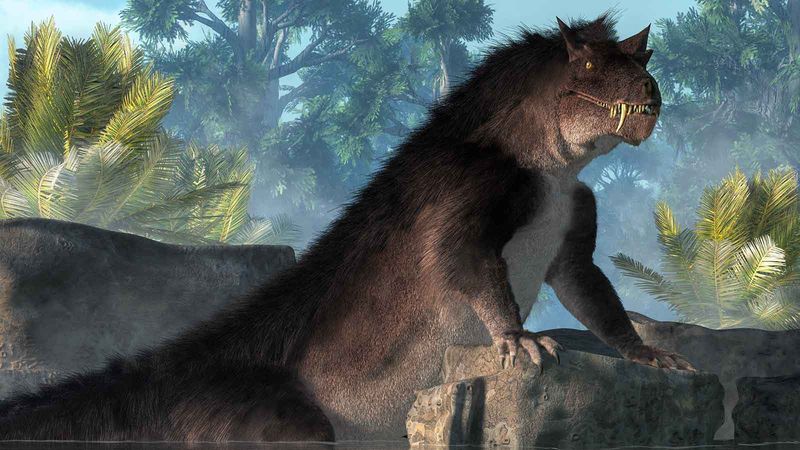
Lurking in the Australian swamps, the bunyip is a creature of mystery and fear. Its mythical presence, often described through campfire tales, is said to emerge from the water at night. With characteristics reminiscent of a seal or perhaps a dugong, the bunyip’s origins might lie in the misidentified sightings of these creatures.
Some stories suggest amphibious traits, coupling an eerie howl with a shadowy figure. The bunyip embodies Australia’s attempt to explain the unknown, blending awe and danger into its narrative.
Despite numerous sightings, no concrete evidence has confirmed its existence, leaving it a captivating enigma.

